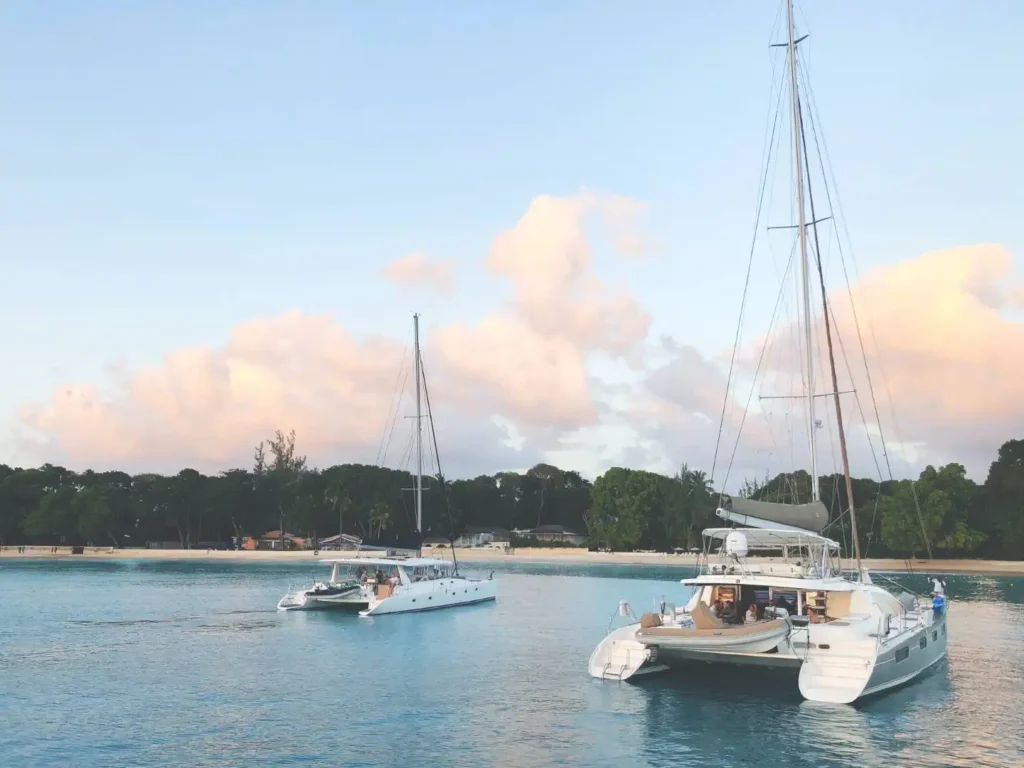Catamarans are watercraft that feature two parallel hulls connected by a deck or structure. They are designed to provide stability, speed, and a smooth ride on water. Catamarans can be used for various purposes, including recreational sailing, racing, chartering, and even as ferries or commercial vessels.
Due to their design, catamarans offer several advantages over traditional monohull boats. They typically have a wider beam, which increases stability and reduces the likelihood of capsizing. The twin hulls also provide a shallow draft, allowing catamarans to navigate in shallower waters. This makes them suitable for exploring coastal areas and navigating through reefs or lagoons.
- Origin of Catamarans: A Historical Journey
- Early Beginnings of Catamarans: Polynesian Canoes
- Indian Influence on Catamarans: The “Kattumaram”
- European Encounter: The Laperouse Expedition with Catamarans
- Modern Advancements in Catamarans : Sail and Speed
- Multihull Renaissance: Racing and Recreation
- Contemporary Catamarans: Versatility and Innovation
- Types of Catamarans Used in the Shipping World
- Frequently Asked Questions About Catamarans
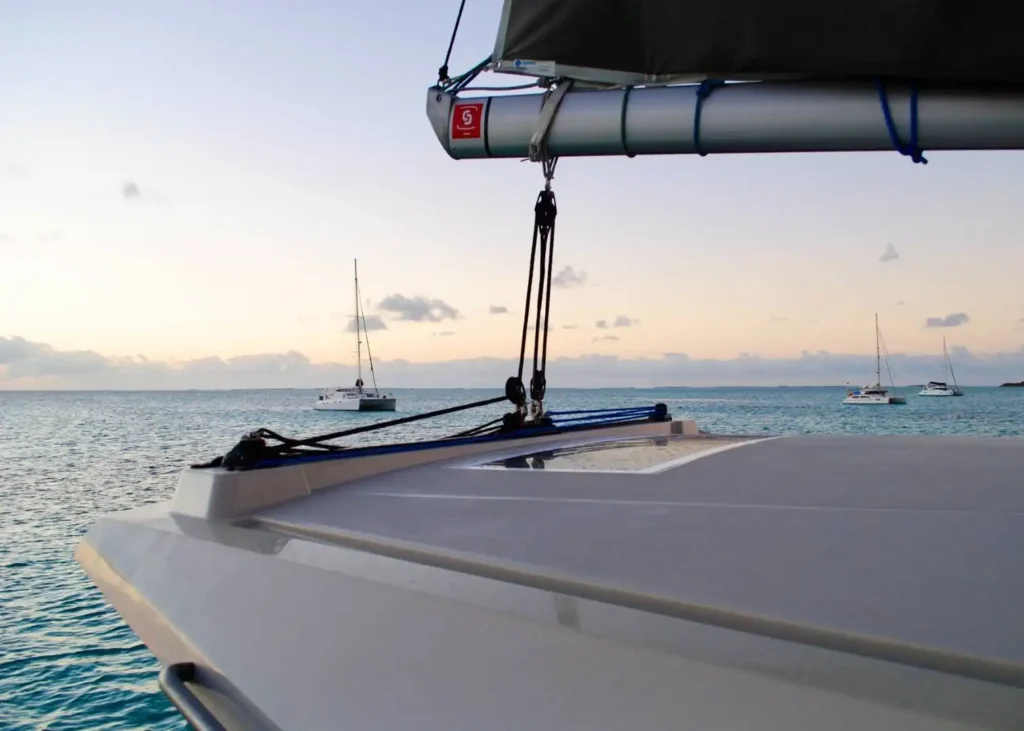
Catamarans are known for their impressive speed potential. With two hulls and reduced water resistance, they can achieve higher speeds compared to monohulls of similar size. This makes them popular for racing or for those seeking a thrilling sailing experience.
In terms of comfort, catamarans offer more interior space and stability compared to monohulls. The wide beam provides ample deck space, allowing for spacious cabins, living areas, and sometimes even multiple levels. The separation of the hulls also reduces the rocking motion typically experienced on monohulls, offering a smoother and more comfortable ride.
Catamarans can come in various sizes, ranging from small recreational vessels to large luxury yachts. They often feature amenities such as multiple cabins, bathrooms, kitchens, lounges, and outdoor spaces like trampolines or sun decks. Some catamarans also have motorized propulsion systems in addition to their sails.
In the shipping industry, catamarans have gained significant popularity due to their unique design and exceptional performance capabilities. These innovative vessels offer a wide range of advantages over traditional monohull ships, making them a preferred choice for various maritime operations.
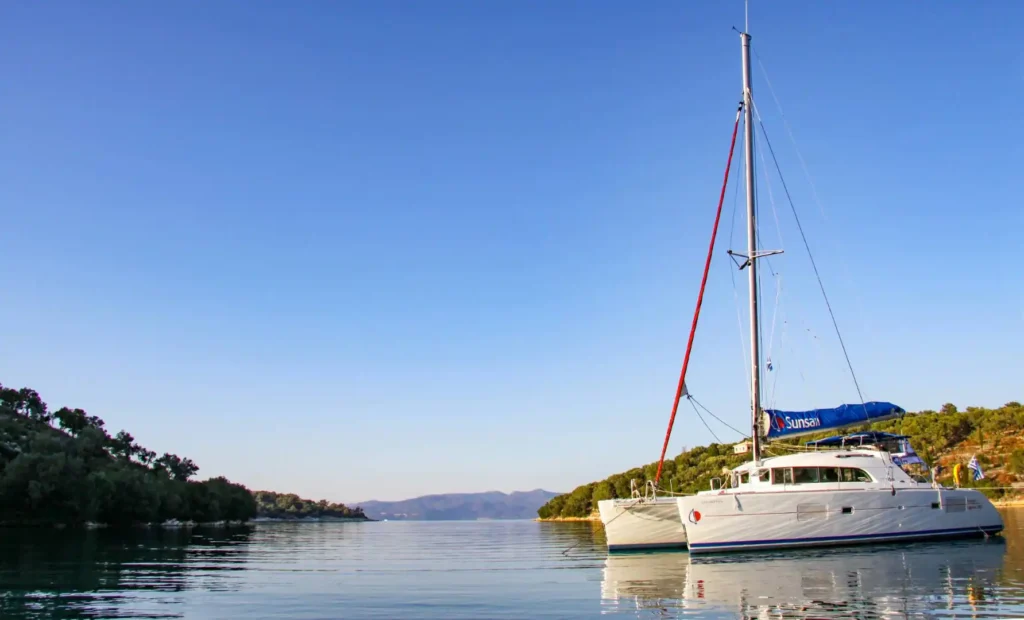
In this article, we will explore the main Types of Catamarans used in the shipping world, highlighting their key features, applications, and benefits.
Origin of Catamarans: A Historical Journey
Catamarans, with their distinctive dual-hull design, have a fascinating history that dates back thousands of years. These unique vessels have traversed the waters of various regions, leaving an indelible mark on maritime culture and exploration. Join us on a historical journey as we delve into the origins of catamarans and uncover the intriguing tales behind their development.
Early Beginnings of Catamarans: Polynesian Canoes
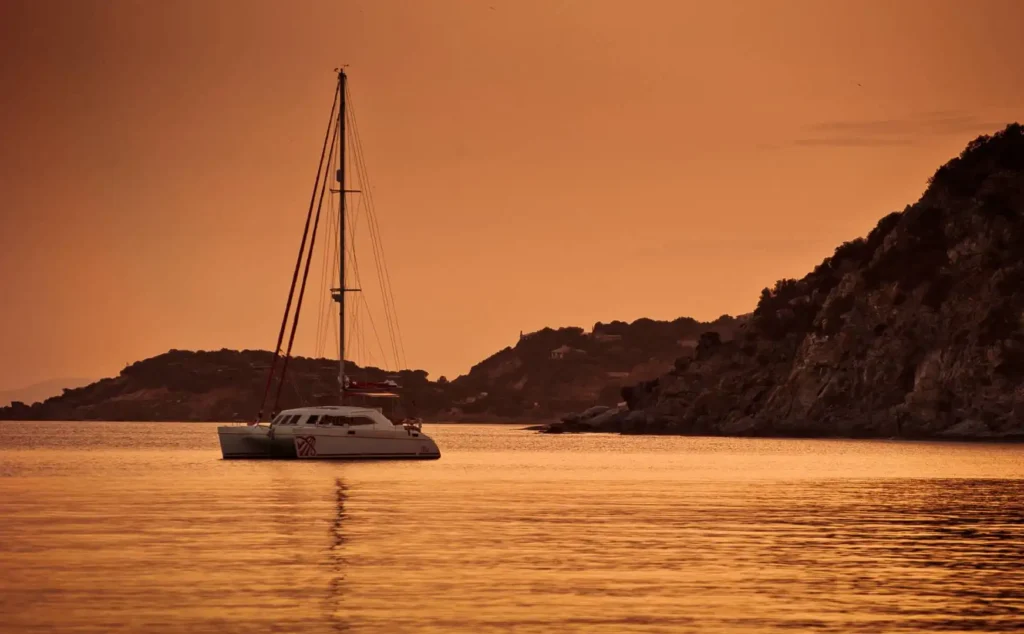
The roots of catamarans can be traced back to the Polynesian islands in the Pacific Ocean. It is believed that Polynesian seafarers were the pioneers of this innovative vessel design.
They crafted canoes using two parallel hulls, lashed together with a platform or deck spanning the gap. These early catamarans, known as “vakas,” were primarily used for fishing, transportation, and exploration of the vast ocean.
Indian Influence on Catamarans: The “Kattumaram”
As maritime trade expanded across the Indian Ocean, the influence of catamarans spread to the shores of India. In the Tamil language, the word “kattumaram” refers to a tied wood or bundle. The Indian catamarans featured two hulls made from wooden logs, fastened together with ropes or coconut fibers.
These agile vessels were utilized by fishermen and coastal communities for their stability and ability to navigate shallow waters.
European Encounter: The Laperouse Expedition with Catamarans

The encounter between European explorers and catamarans occurred during the late 18th century when French navigator Jean-François de Galaup, comte de La Pérouse, embarked on a scientific expedition. In 1787, La Pérouse observed the use of catamarans by locals in the region of Tamil Nadu, India. Impressed by their efficiency and maneuverability, he documented his observations, introducing catamarans to the Western world.
Modern Advancements in Catamarans : Sail and Speed
In the 19th century, advancements in sailing technology brought significant changes to catamaran design. Sailors recognized the potential of catamarans for speed and efficiency. James Wharram, a British boat designer, played a crucial role in popularizing modern catamarans.
His pioneering designs, influenced by Polynesian and Indian traditions, emphasized stability, maneuverability, and increased sail area.
Multihull Renaissance: Racing and Recreation
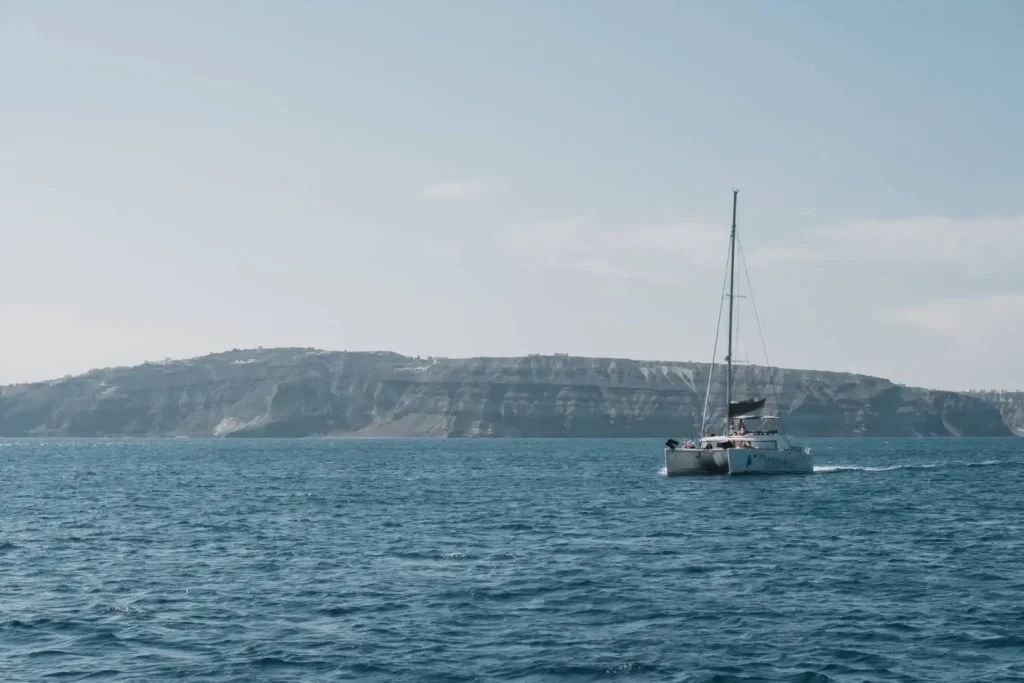
The latter half of the 20th century witnessed a resurgence of interest in catamarans. Sailors and enthusiasts began to recognize the inherent advantages of catamarans in terms of speed and performance. In the 1960s, multihull sailboats, including catamarans, started to dominate competitive sailing events such as the famous Whitbread Round the World Race.
This success further propelled catamarans into the spotlight, attracting attention from both professional racers and recreational sailors.
Contemporary Catamarans: Versatility and Innovation
Today, catamarans have evolved into a diverse range of vessels, catering to various needs and preferences. They have found their place in commercial shipping, luxury yachting, scientific research, and military operations.
Advancements in materials, construction techniques, and engineering have further improved their performance, durability, and comfort. Modern catamarans boast sleek designs, spacious interiors, and cutting-edge technology, offering an unparalleled sailing experience.

Types of Catamarans Used in the Shipping World
1. Passenger Catamarans
Passenger catamarans are specifically designed to transport large numbers of people efficiently and comfortably. These vessels are widely utilized for ferry services, cruise ships, and other passenger transport operations.
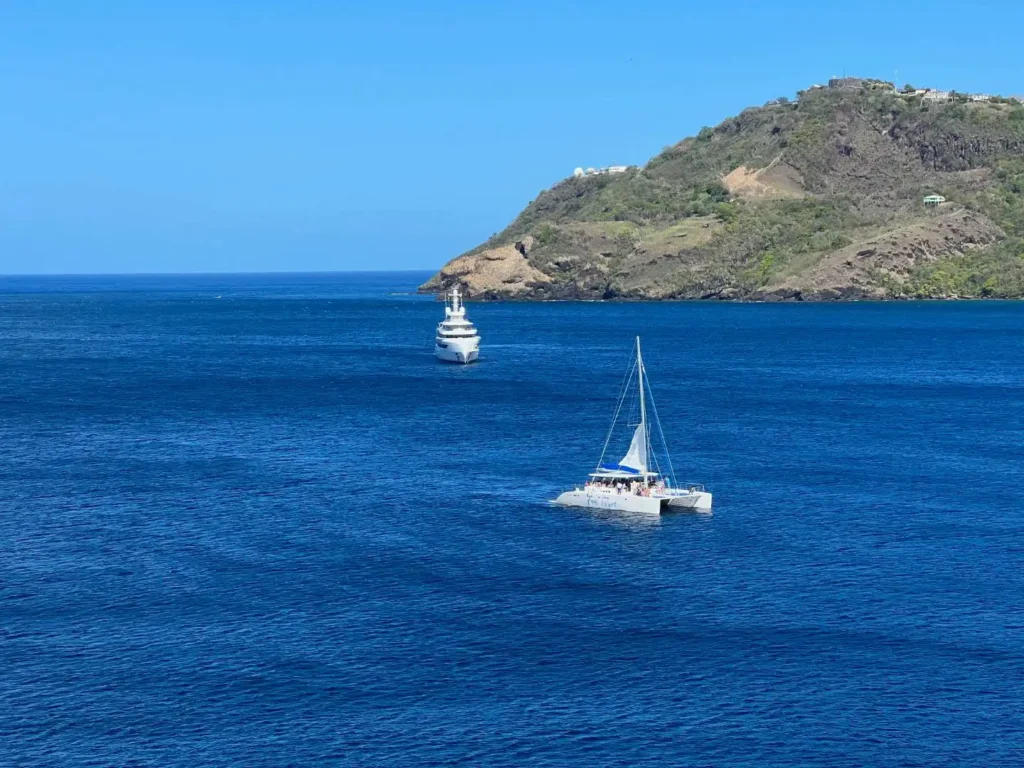
With their spacious interiors, multiple decks, and advanced stabilization systems, passenger catamarans provide a smooth and enjoyable journey for travelers. The catamaran’s stable platform minimizes the chances of seasickness, making it a preferred choice for those seeking a comfortable and pleasant voyage.
2. Offshore Support Catamarans
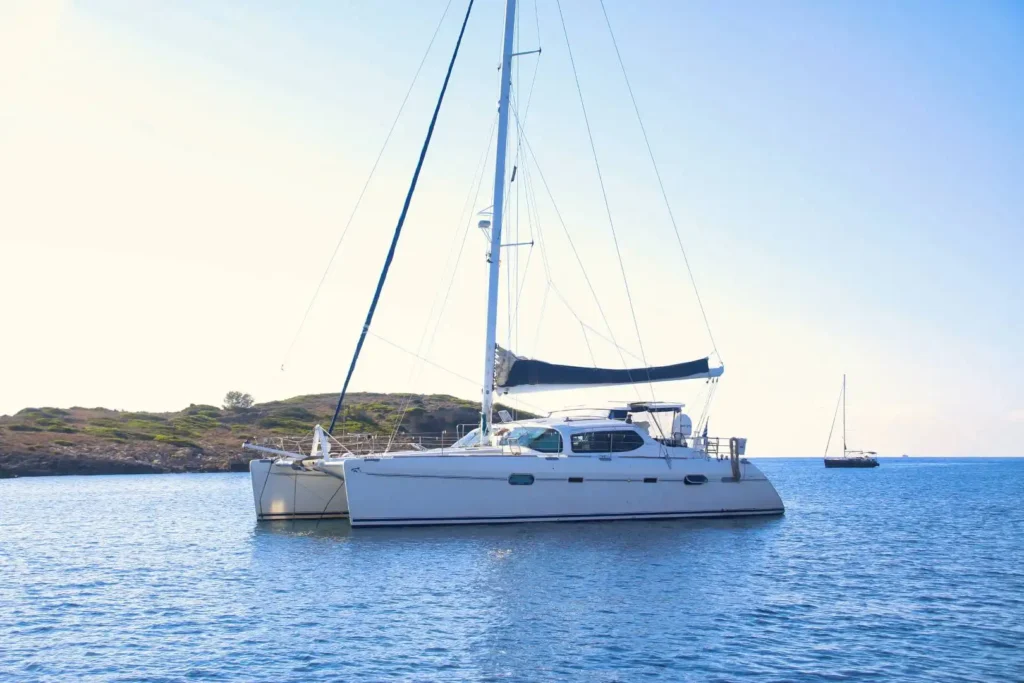
Offshore support catamarans are specially built to serve the needs of offshore industries such as oil and gas exploration, wind farm maintenance, and subsea operations. These vessels offer exceptional stability, maneuverability, and load-carrying capacity, making them ideal for providing essential services in remote offshore locations.
Offshore support catamarans often feature helipads, cranes, and specialized equipment to facilitate a wide range of offshore operations.
3. Military Catamarans
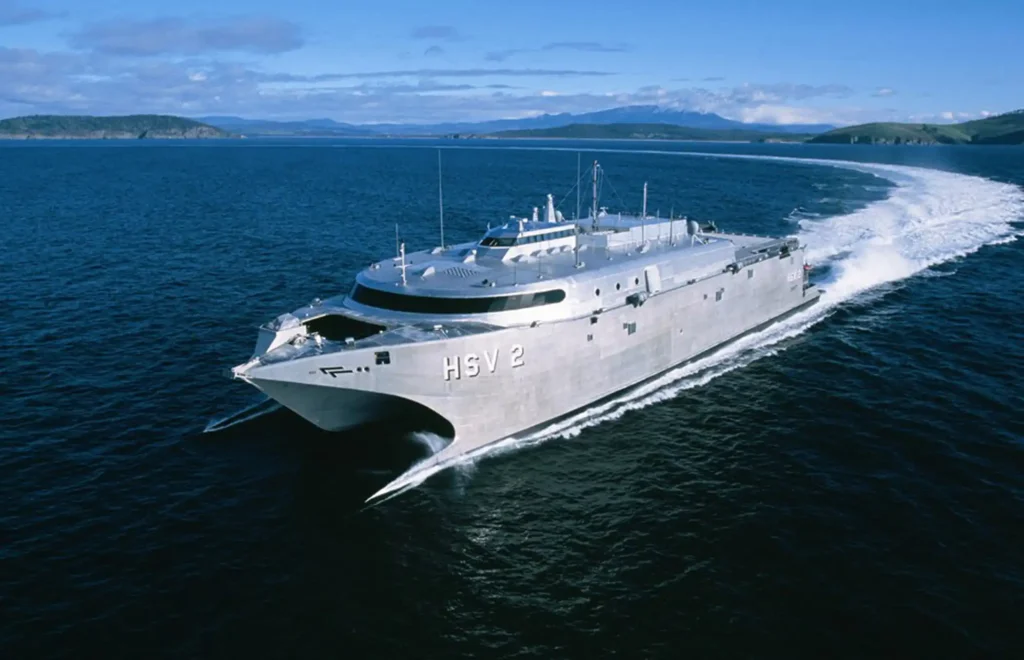
Military catamarans play a crucial role in naval operations worldwide. These vessels are designed with advanced technologies to meet the specific requirements of naval forces, including defense, surveillance, and rapid deployment of personnel and equipment.
Military catamarans offer enhanced speed, stealth capabilities, and reduced radar signatures, making them valuable assets for coastal patrols, search and rescue missions, and military interventions.
4. Research and Survey Catamarans
Research and survey catamarans are extensively used in scientific expeditions, environmental studies, and hydrographic surveys. These specialized vessels are equipped with advanced research equipment, laboratories, and data collection systems.
Research catamarans provide a stable platform for scientists to conduct various studies, including marine biology, oceanography, and geophysical research. The catamaran’s design ensures minimal disturbance to marine ecosystems and accurate data collection for scientific analysis.
5. High-Speed Catamarans
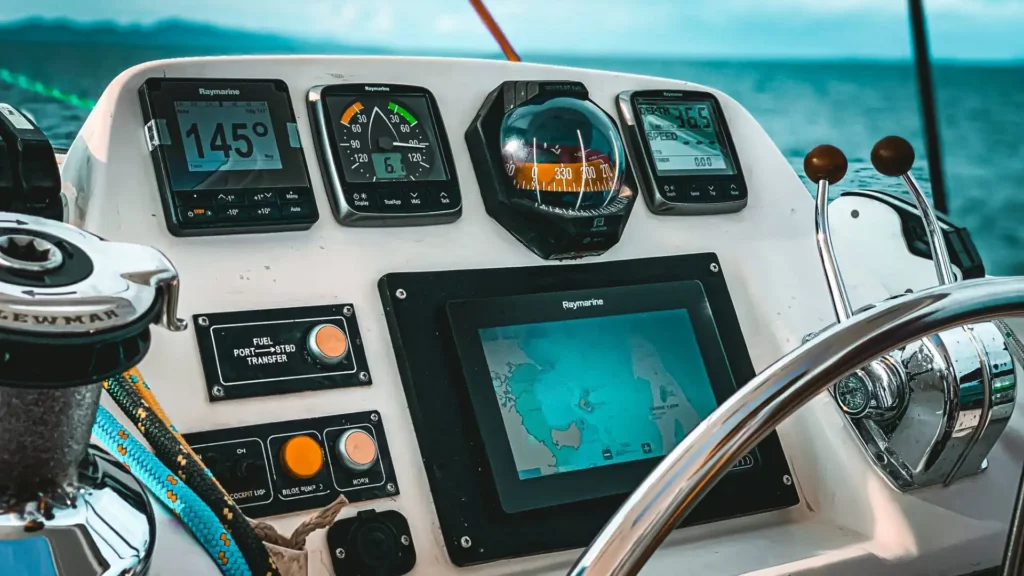
High-speed catamarans are renowned for their exceptional velocity and maneuverability. These vessels are utilized for various purposes, including coastal transportation, search and rescue operations, and competitive racing events. High-speed catamarans feature powerful engines, lightweight construction, and hydrodynamic designs, enabling them to achieve impressive speeds while maintaining stability.
The ability to swiftly traverse waterways makes high-speed catamarans invaluable in time-sensitive missions and emergency situations.
Present-Era Cats
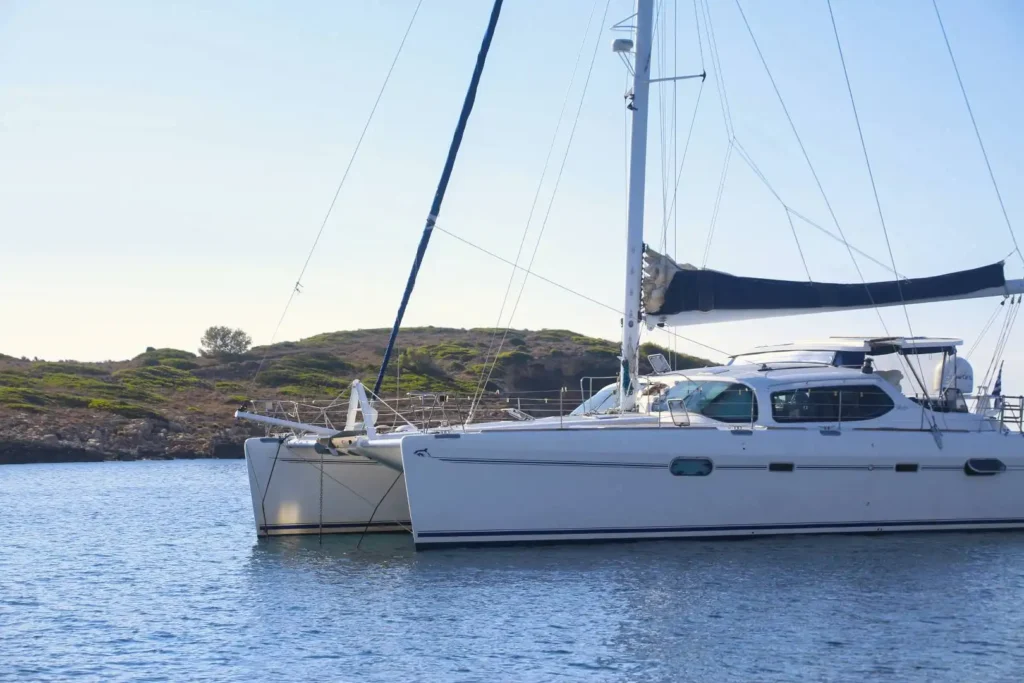
In the present times, cats have evolved from being mere sailboats or fishing boats. There are two basic design types of catamarans: Pontoon and SWATH (Small Waterplane Area Twin Hull).
The former is relatively small, compact and uses floats (known as pontoons in marine slang) as a major technology to propel the water along with the dual hulls. In contrast, the latter is quite large and is designed primarily to maintain balance in sea areas with unpredictable currents and tides.
It has to be noted that in today’s times, all variations of catamarans are made of fiberglass or carbon fiber. They are motorised and engine-powered, making them even more reliable than they used to be before.
Conclusion
Catamarans have revolutionized the shipping industry, offering a diverse range of vessel types to cater to specific operational requirements. Whether it’s passenger transportation, offshore support, military applications, scientific research, or high-speed operations, catamarans have proven their worth in terms of stability, efficiency, and versatility.
By understanding the main types of catamarans used in the shipping world, maritime stakeholders can make informed decisions when selecting the most suitable vessel for their particular needs.
Remember, the success of a catamaran in the shipping industry relies on several factors, including design, engineering, operational efficiency, and crew expertise. By harnessing the advantages of catamaran technology and staying updated with the latest advancements, shipping companies can optimize their operations and stay ahead in this competitive industry.
Frequently Asked Questions About Catamarans
1. What are catamarans used for?
Catamarans are a preferred option for day sailing, cruising, fishing etc. Many boat charter companies offer their customers yachts, motor yachts and catamarans. Though their design dates back 100 years, the updated and technologically updated catamarans have a massive demand in the sailing market.
2. What are the disadvantages of catamarans?
Catamarans are 150 to 200 per cent more expensive than yachts of the same length. Also, special marinas are built for these vessels due to their width. Also, they are costlier to maintain and repair than other similar vessels.
3. What is the speciality of catamarans?
Catamarans offer more stability as they have two hulls, which decrease the chances of people falling overboard. They are larger and more comfortable than normal sailing boats, not to forget their eye-catching designs.
4. Do they have washrooms?
Today, catamarans have all amenities, including saloons, seating areas, well-fitted washrooms and plenty of interior space. Also, during bad weather, they can be steered from inside.
5. What is the lifespan of a catamaran?
On average, a catamaran can last for 15 to 25 years and even 30 years if it is well-kept and maintained. Its lifespan also depends on the usage, type, quality of construction material etc.
You may also like,
- What Determines if a Speed is Safe for Your Boat
- Fishing Vessels – Types of Fishing Boats
- 50 facts about LNG Shipping companies with LNG Tankers
- Understanding the Anatomy of the Front Part of a Ship
- Everything about Merchant Navy Ships
- Safety onboard Merchant Navy Ships

